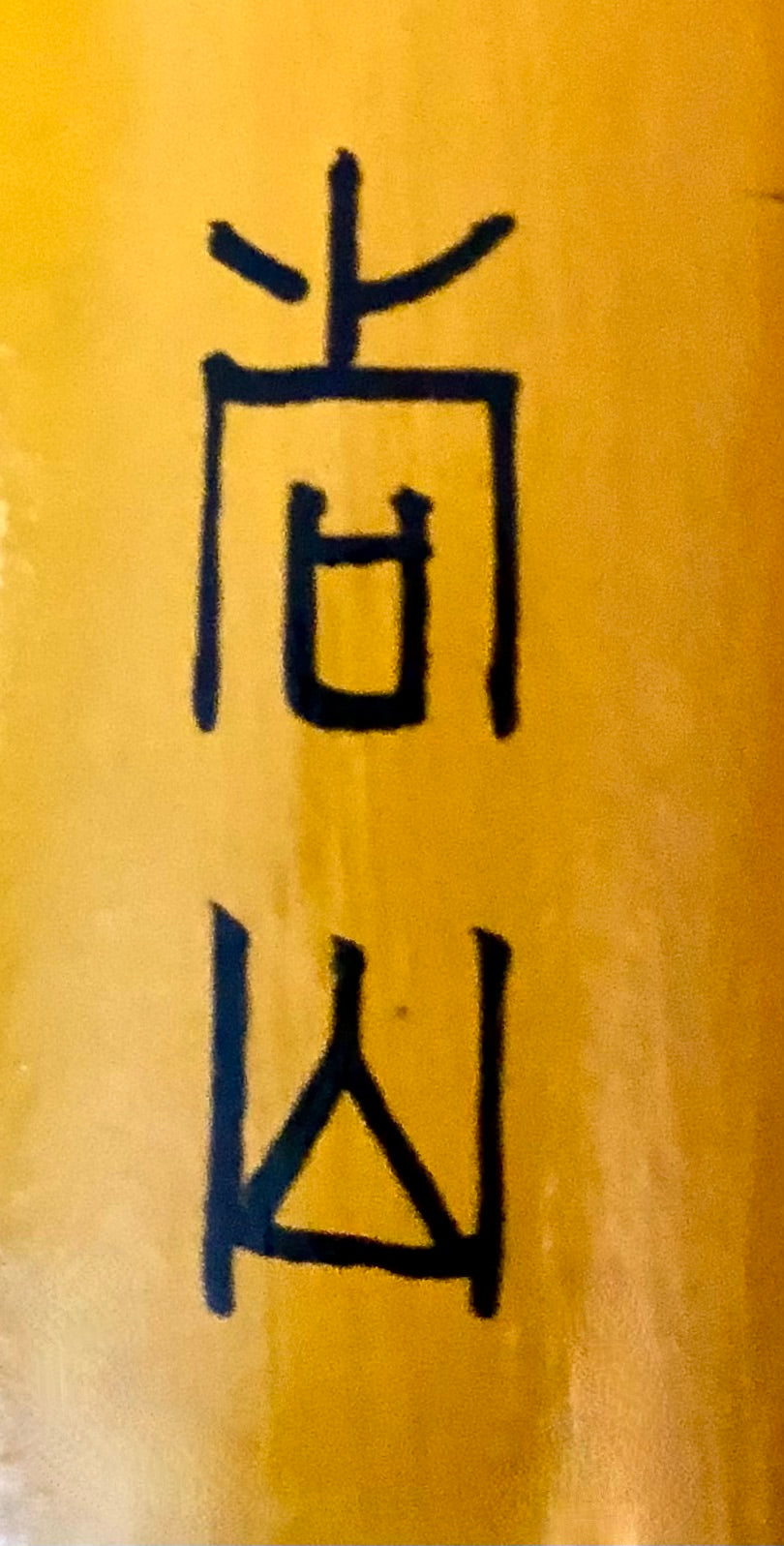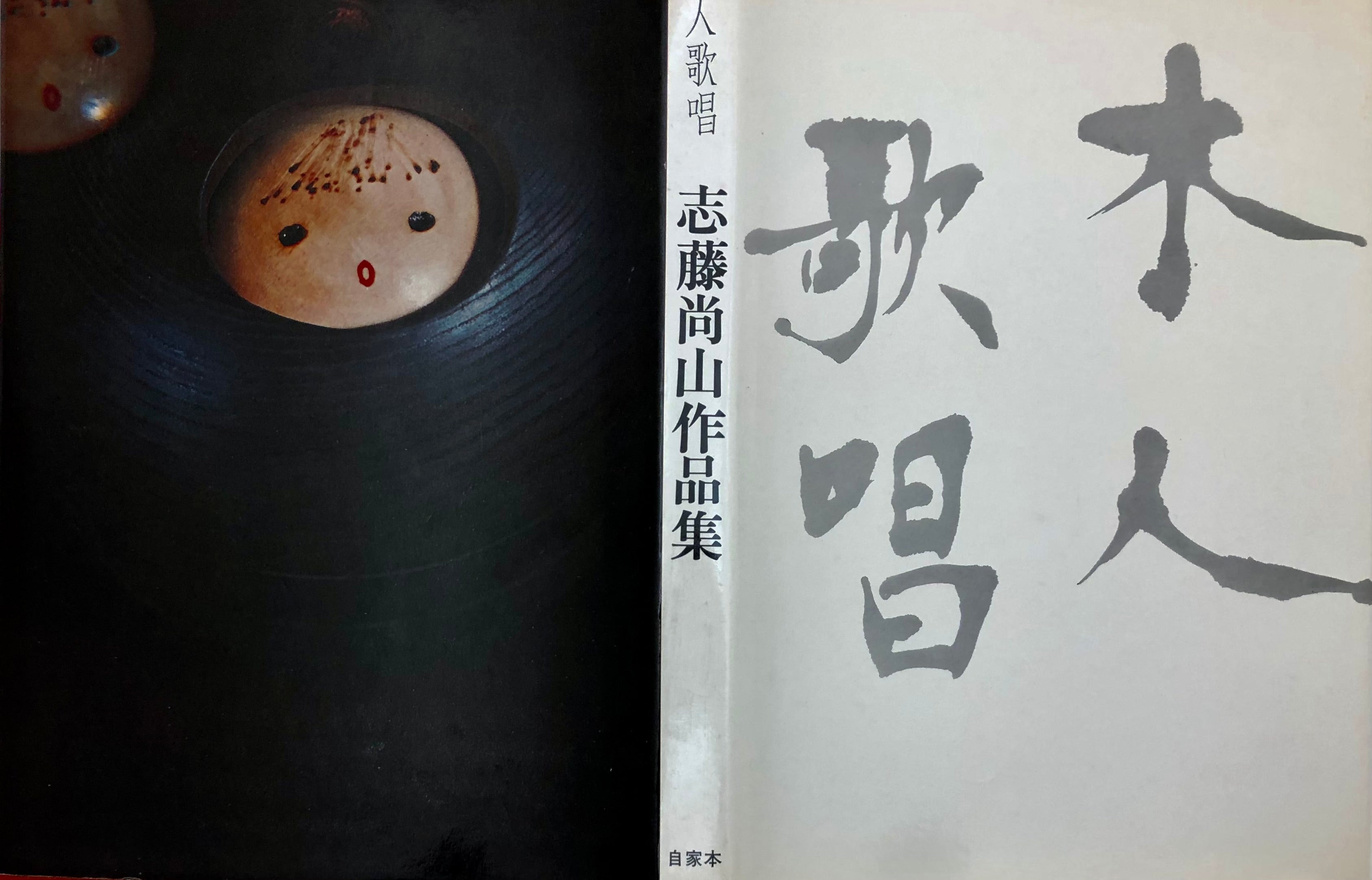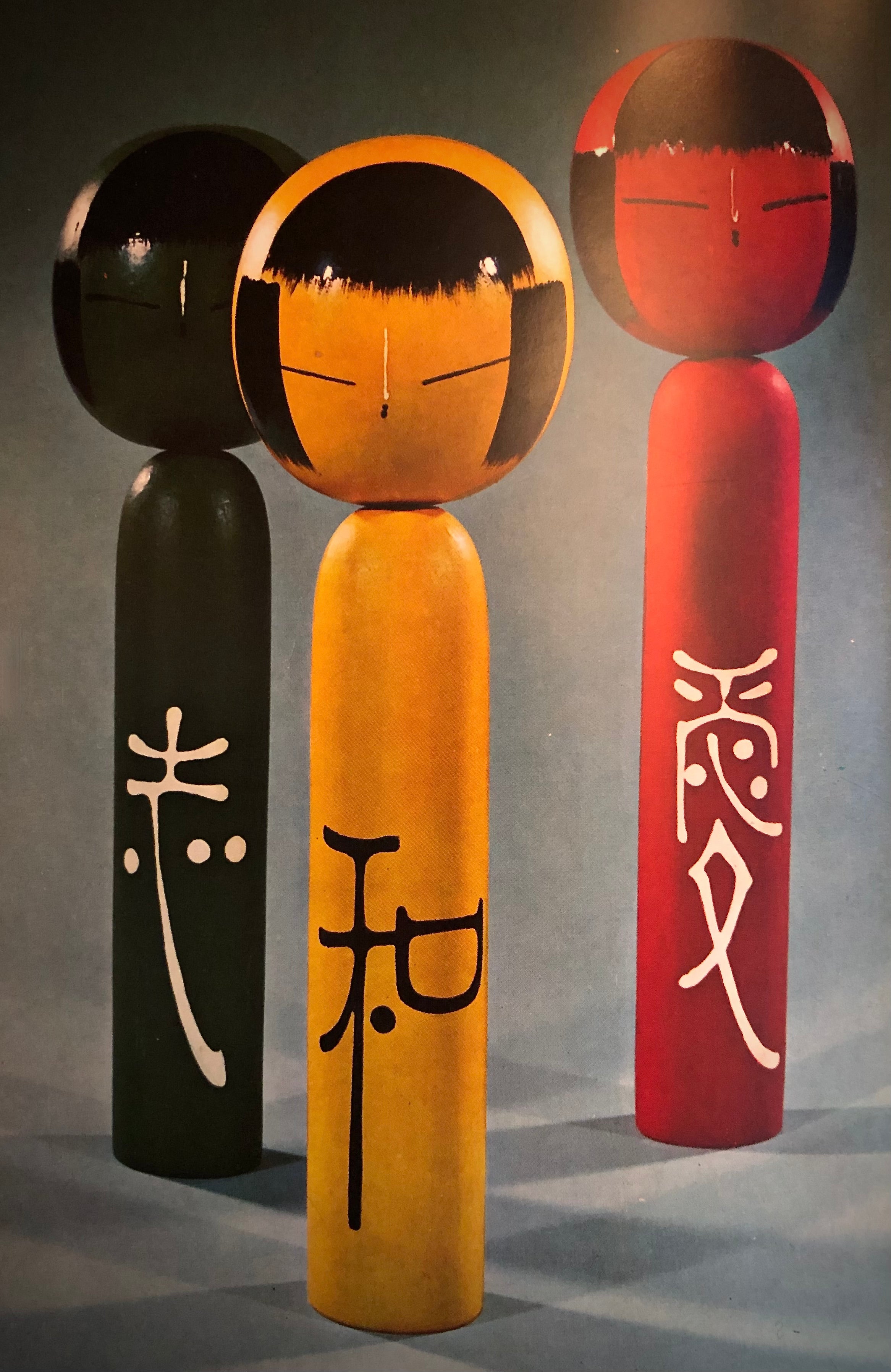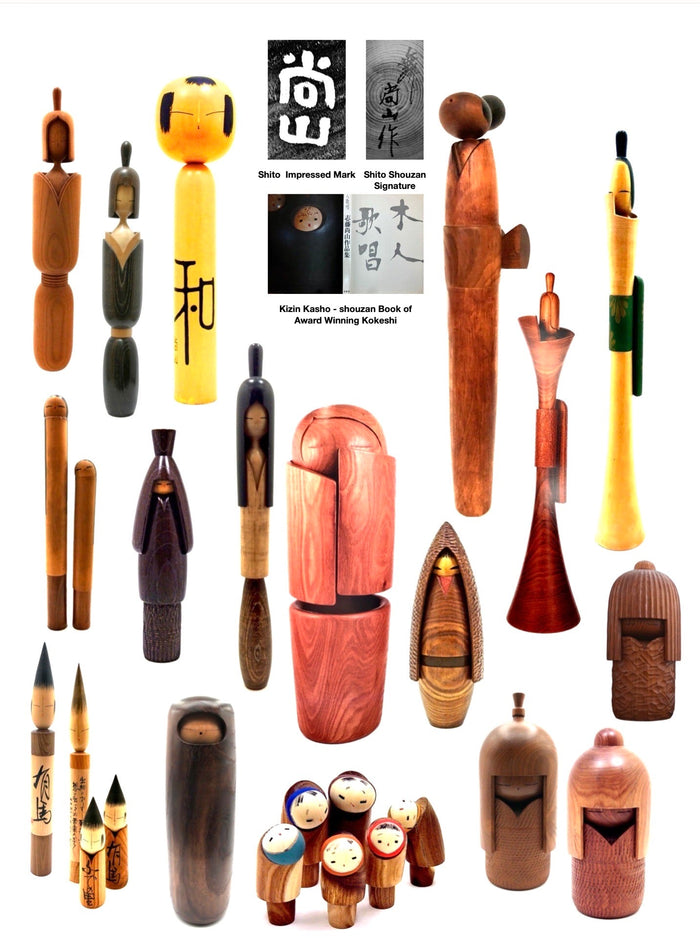






Sosaku Kokeshi Entitled: “WA” - PEACE by Shido Shouzan | 1965
Dimensions: 18-0”h
This is an exceptionally unusual Kokeshi celebrating PEACE and was created just after the Beatles had their first performance in Japan in 1965. The Peace movement began in the 1960s in the United States and was one of the most tumultuous and divisive decades in U.S. history. Being encouraged by what was happening in the United States, the Japanese peace movement, (known as the "Anpo Struggle"), was initiated a few years earlier also recognizing the “generation gap” that exists to this day."
"Peace and “Hipster” artifacts are still being found in Japanese earthen storehouses, (known as dozō, more specifically called, Kura), which have white plaster walls, designed to be fireproof and insulated with mud, built next to Japanese homes protecting their valuables and waiting to be appreciated for their historical significance. Many musicians and artists became part of the movement and were occasionally seen at protests and homes showing up in the form of Japanese Kokeshi.
This wonderful large doll is in bright yellow lacquer over red, traditionally used to paint the ground of the body, but here is emphasized as a statement color. The expressive face, with single eyelids, is framed by a traditional hair decoration illustrating bangs and hair fringes. This is a plain doll with beveled shoulders, with the only body decoration being PEACE written in kanji, and signed by the artist on one side of the figure. The three (3) variations of this Kokeshi were published in a retrospective book in 1971 entitled: “Japanese Vintage Wooden Kokeshi Doll on Shido Shozan and were made in red, yellow, and black/green with different sayings supportive of the movement. This piece is a "limited edition" purchased in 1979 in Yonezawa City, and we have only seen it published in the aforementioned book by Shouzan and yet to see any others advertised for sale.
See additional writings on our website related to this subject: Under our Browse and Learn section, please refer to https://mingeiarts.com/collections/artisan-woodworker-shido-shozan-1932-1995 for full details on the history and development of his work.
Antique Condition: Excellent to Very Good, displayable condition showing visible aging and yellow variegation in density throughout the piece caused by oxidation from the exposure to the type and quality of light. Kokeshi artists rarely use yellow enamels on large surfaces because they are significantly more difficult to work with than any other color. We were told by a Kokeshi conservator that, “the goal is always to leave the inherent value of an antique untouched for refinishing Folk Art can diminish the value” and leave it with its historical imperfections. Based upon those recommendations and to preserve the piece, and not inadvertently destroy its value we have kept the doll in the condition when purchased which represents this tumultuous period not only in Japan but around the world.

Artisan
Woodworker: Shido, Shouzan
1932-1995
Biographical History:
Shouzan began making Sosaku Kokeshi in 1959, soon after he graduated from Chuo University with a law degree. He is considered by Kokeshi collectors and critics alike to be arguably the most influential artist in the world of Sosaku Kokeshi doll-making. Shido-san’s main focus was depicting unadorned Northern girls in the traditional “Mino”, or Snow Coat, but he also produced tall, thin dolls, which were sparsely decorated. His keen sense of design, minimal use of color, and simple elegant shapes set him apart from his peers, making him one of the most collectible artists emerging from the creative period of the ‘60s winning various awards since 1961. He served as a judge of the All Japan Kokeshi Contest from 1970 to 1976. During that time Shozan published a book entitled Kizin Kasho comprising examples of his award-winning Kokeshi. His dolls have been collected and exhibited worldwide and winner of the Prime Minister’s Award, among many other awards.
Collector's note – descriptive qualities, standard characteristics & ornamentation styles:
Shito-san loved studying the use of combining different types of wood to gain the desired effect and to give dimension to his pieces. He also enjoyed creating slender, tall dolls to support the fact that they resemble the tall, thin trees seen throughout Japan. He incorporated a repetitive textural pattern called ‘Harmonic Chatter work’ to enhance the natural qualities of the wood in many of his works. He particularly enjoyed the textural qualities of ‘Chattering’ on the rain/snow coat, (Minomushi), which is a favorite theme, executed with minimal painted ornamentation, with an emphasis on the natural wood. In general, it is said that Japanese culture is one of modesty and humility. Occasionally saw different types of headdresses, one of which he called a ‘Tsunokakushi’, which is a wide headdress or hood, that covered elaborate hairstyles. We are told that the Japanese people regulate their behavior and response by reading faces and the eyes of others. Here, as well as elsewhere, you will see many examples of different characteristics of the eye's expressions. His most famous doll, which was considered a favorite was called “Mai”, a dancer, which was an elegant and slender doll with a beautifully formed Kimono focusing on traditional hair design (Mage) with an emphasis on a brightly colored “obi” which brings forth the best use of complex geometry to create traditional Japanese clothing elements which were created in 1970.
Shito-san was a prolific artist/woodworker of Kokeshi dolls some of which were whimsical, some focusing on calligraphy citing haiku (poems). We additionally see unusual subjects focused on Zen Buddhism and figures of Daruma, (Bodhidharma) of which most were made in a “roly-poly” type figure seen throughout festivals in Japan.
Explore & Learn More about Woodworker: Shido, Shouzan